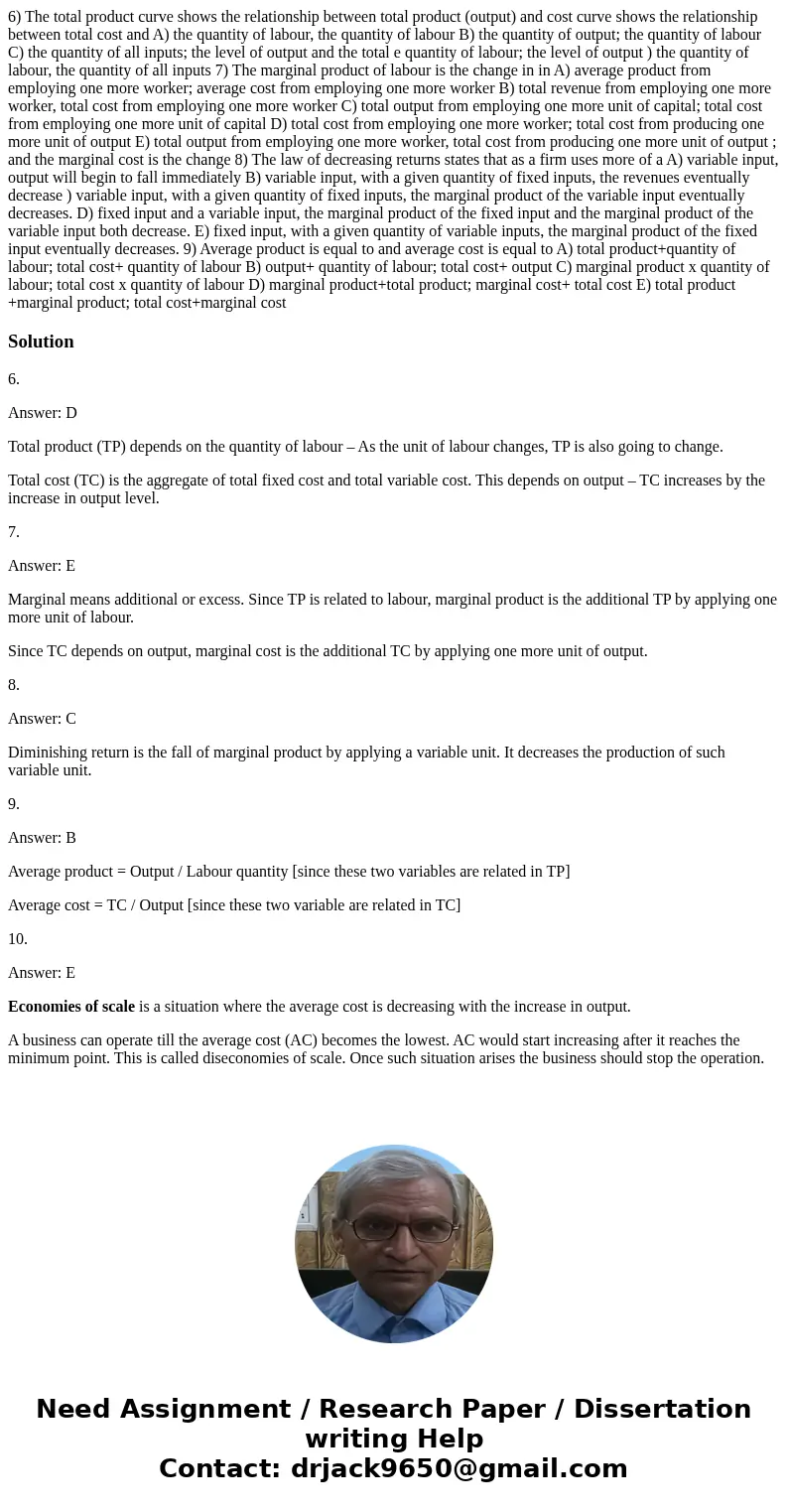6) The total product curve shows the relationship between total product (output) and cost curve shows the relationship between total cost and A) the quantity of labour, the quantity of labour B) the quantity of output; the quantity of labour C) the quantity of all inputs; the level of output and the total e quantity of labour; the level of output ) the quantity of labour, the quantity of all inputs 7) The marginal product of labour is the change in in A) average product from employing one more worker; average cost from employing one more worker B) total revenue from employing one more worker, total cost from employing one more worker C) total output from employing one more unit of capital; total cost from employing one more unit of capital D) total cost from employing one more worker; total cost from producing one more unit of output E) total output from employing one more worker, total cost from producing one more unit of output ; and the marginal cost is the change 8) The law of decreasing returns states that as a firm uses more of a A) variable input, output will begin to fall immediately B) variable input, with a given quantity of fixed inputs, the revenues eventually decrease ) variable input, with a given quantity of fixed inputs, the marginal product of the variable input eventually decreases. D) fixed input and a variable input, the marginal product of the fixed input and the marginal product of the variable input both decrease. E) fixed input, with a given quantity of variable inputs, the marginal product of the fixed input eventually decreases. 9) Average product is equal to and average cost is equal to A) total product+quantity of labour; total cost+ quantity of labour B) output+ quantity of labour; total cost+ output C) marginal product x quantity of labour; total cost x quantity of labour D) marginal product+total product; marginal cost+ total cost E) total product +marginal product; total cost+marginal cost
6.
Answer: D
Total product (TP) depends on the quantity of labour – As the unit of labour changes, TP is also going to change.
Total cost (TC) is the aggregate of total fixed cost and total variable cost. This depends on output – TC increases by the increase in output level.
7.
Answer: E
Marginal means additional or excess. Since TP is related to labour, marginal product is the additional TP by applying one more unit of labour.
Since TC depends on output, marginal cost is the additional TC by applying one more unit of output.
8.
Answer: C
Diminishing return is the fall of marginal product by applying a variable unit. It decreases the production of such variable unit.
9.
Answer: B
Average product = Output / Labour quantity [since these two variables are related in TP]
Average cost = TC / Output [since these two variable are related in TC]
10.
Answer: E
Economies of scale is a situation where the average cost is decreasing with the increase in output.
A business can operate till the average cost (AC) becomes the lowest. AC would start increasing after it reaches the minimum point. This is called diseconomies of scale. Once such situation arises the business should stop the operation.

 Homework Sourse
Homework Sourse